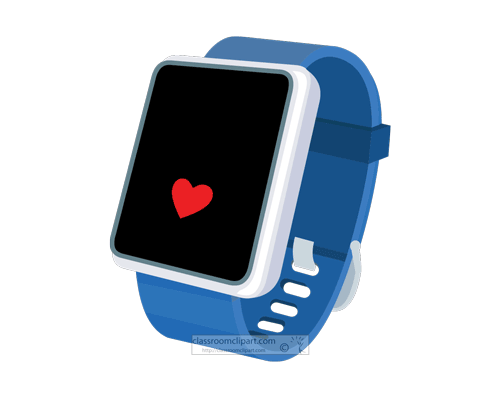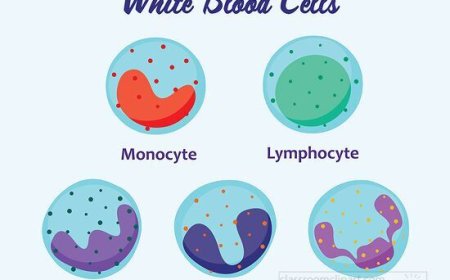How Digestion Works: Step-by-Step from Bite to Nutrients
ollow the journey of food in this step-by-step guide for students. Learn how digestion breaks down what you eat into nutrients your body can use. Includes quiz, vocabulary, and summary.
🍽️ How Digestion Works: Step-by-Step from Bite to Nutrients
Have you ever wondered what happens to your food after you eat it? The moment you take a bite, your body starts a multi-step process to break that food into tiny pieces your body can use for energy, growth, and repair. This is called digestion.
Digestion happens in a long, winding journey through the digestive system, which is about 30 feet long from start to finish. Every step is important, and different organs do different jobs—breaking, squeezing, mixing, and absorbing.
Let’s follow a piece of food—from the first bite all the way to the bloodstream.
🦷 Step 1: Chewing in the Mouth
Digestion begins in the mouth, where teeth chew food into smaller pieces. This is called mechanical digestion—using movement to break food apart.
At the same time, saliva from your salivary glands begins chemical digestion. It contains special proteins called enzymes that start breaking down starches (like bread and pasta) into sugars.
Once food is soft and mushy, your tongue pushes it to the back of your mouth so you can swallow.
🧵 Step 2: Swallowing and Traveling Down the Esophagus
When you swallow, food travels down a tube called the esophagus. This tube uses muscle movements called peristalsis to push the food toward your stomach—kind of like squeezing toothpaste out of a tube.
This step is fast—food can move from your mouth to your stomach in about 5–10 seconds.
🥣 Step 3: Mixing in the Stomach
In the stomach, food is churned and mixed like a washing machine. The stomach squeezes and turns food into a thick soup called chyme.
Your stomach also adds:
- Hydrochloric acid – helps break down proteins and kills germs
- Digestive enzymes – help digest fats and proteins
Food stays in the stomach for about 2 to 4 hours, getting thoroughly mixed and broken down.
🧪 Step 4: Breaking Down in the Small Intestine
Next, the chyme moves into the small intestine—a long, narrow tube where most digestion happens. This is where food is turned into usable nutrients.
Here’s what helps:
- Bile from the liver helps digest fats
- Pancreatic enzymes break down proteins, fats, and carbs
- Tiny finger-like structures called villi absorb nutrients into the blood
Most of the important nutrients—like vitamins, minerals, sugars, amino acids, and fatty acids—are absorbed here.
💧 Step 5: Absorbing Water in the Large Intestine
After nutrients are absorbed, the leftover material (mostly water, fiber, and waste) moves into the large intestine (also called the colon).
Here, your body:
- Absorbs water and minerals
- Turns the waste into solid stool (poop)
- Stores it until it's ready to leave the body through the rectum and anus
This part of digestion takes longer—sometimes 12 to 48 hours!
🚀 Step 6: Nutrients Enter the Bloodstream
Once food is digested, the nutrients pass through the walls of the small intestine and enter your bloodstream.
Your blood carries these nutrients to:
- Muscles (for movement)
- Brain (for thinking and memory)
- Bones and skin (for growth and repair)
- Organs (for energy and function)
The leftover waste that can’t be used becomes poop and is removed when you go to the bathroom.
🎉 Fun Facts About Digestion
- Digestion begins before you even eat—the smell of food starts saliva flowing!
- Your stomach makes a new lining every few days so the acid doesn’t hurt it
- It takes your digestive system about 24 to 72 hours to fully process a meal
- The small intestine is over 20 feet long but only an inch wide
- Peristalsis (muscle waves) happens even if you’re upside down!
🧠 Vocabulary
- Digestion – The process of breaking down food into nutrients
- Enzymes – Proteins that speed up chemical digestion
- Peristalsis – Muscle movements that push food through the digestive tract
- Chyme – The thick liquid mixture of food and stomach juices
- Small intestine – Where most digestion and nutrient absorption happens
- Large intestine – Absorbs water and stores waste
- Villi – Tiny finger-like structures in the small intestine that absorb nutrients
- Bile – A fluid from the liver that helps break down fat
- Nutrient – A substance your body needs to grow, move, and stay healthy
- Stool – Another word for poop (waste from the digestive process)
✅ Interactive Quiz: Digestive Journey Challenge!
1. Where does digestion begin?
A. Stomach
B. Small intestine
C. Mouth
D. Liver
2. What is the name of the muscle movement that pushes food down the esophagus?
A. Flexing
B. Peristalsis
C. Digestion
D. Chewing
3. What does your stomach turn food into?
A. Blood
B. Water
C. Chyme
D. Fiber
4. Where are most nutrients absorbed?
A. Large intestine
B. Mouth
C. Small intestine
D. Esophagus
5. What carries nutrients to the rest of your body?
A. Brain
B. Muscles
C. Blood
D. Lungs
🧒 Kid-Friendly Summary
Digestion is how your body turns food into fuel and building blocks. It starts in your mouth, moves through your stomach and intestines, and ends with nutrients going into your blood. Every bite you eat begins a big adventure inside you—giving you the energy to play, grow, and learn!



















































